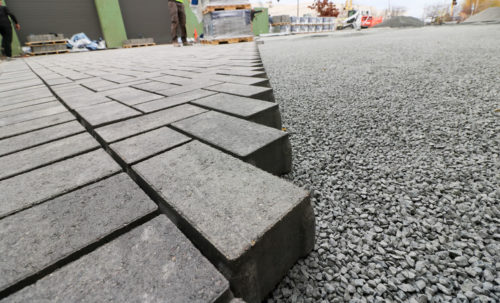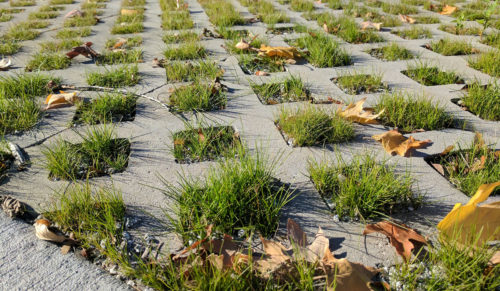Permeable Pavers

Permeable pavers allow stormwater to soak into the ground by running down into the gaps between pavers. The pavers are installed over one or more base layers of stone and/or sand. In addition to providing a stable base for the pavers, these base layers provide drainage capacity and allow runoff to infiltrate the ground beneath.
Pollutants that would otherwise enter stormdrains are captured in the gaps between the pavers, and can be removed by an industrial vacuum truck as part of an annual maintenance routine. Depending on the needs of the site, an underdrain can be installed for additional drainage capacity.
Permeable pavers are an eco-friendly alternative to traditional concrete or asphalt pavements. They are especially useful for managing stormwater in areas where there is little space for vegetation. They can be used for anything from residential patios and walkways to commercial parking lots. Another advantage of pavers is that they are easily removed, replaced and re-set.
You don’t necessarily need to use pavers for your entire driveway, parking lot or walkway, either. Strategically placed strips of permeable pavers might be sufficient to manage the stormwater runoff on your site. You might want to consult with a professional landscape designer to determine your drainage needs.
Variations

Turf block is a manufactured concrete block with gaps that allow vegetation to grow and let stormwater soak into the ground. It provides a stable base for walking and driving while also helping to capture runoff and filter out pollutants.
Permeable pavement is concrete or asphalt pavement that allows stormwater to percolate through the paved surface. Pervious concrete and porous asphalt are examples of this technology.
The chief difference between permeable pavements and traditional pavements is that permeable pavements use large aggregates with no fine aggregates in the mix. This creates voids in the pavement where water can pass through.
Videos
You can also find this video playlist on our YouTube channel.